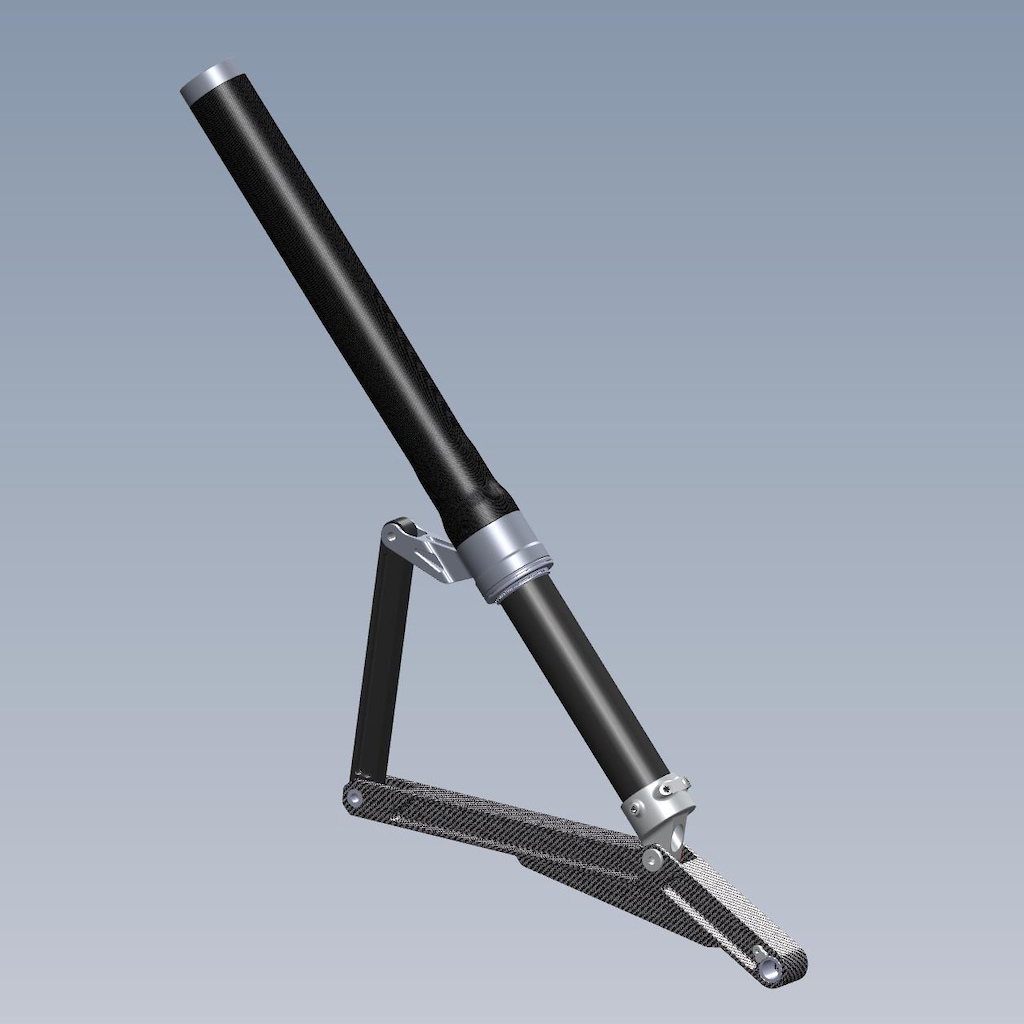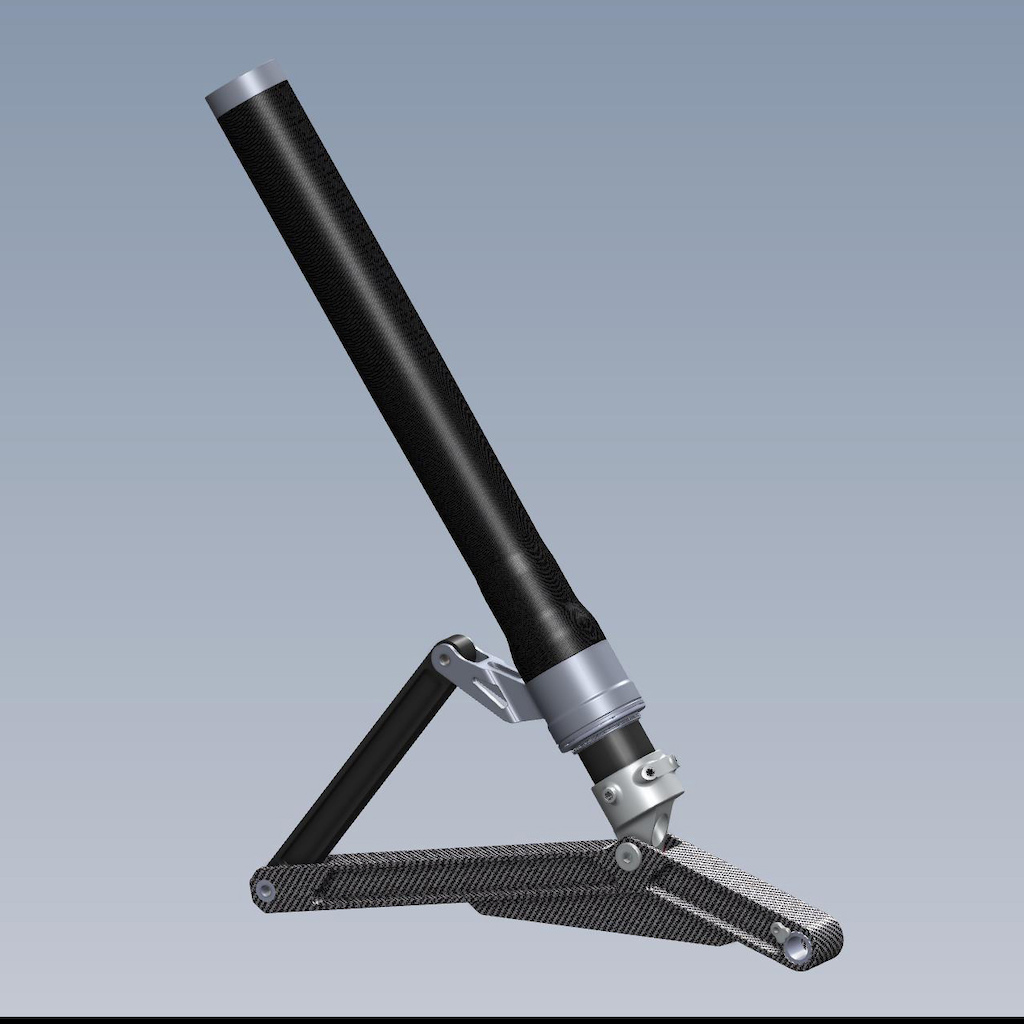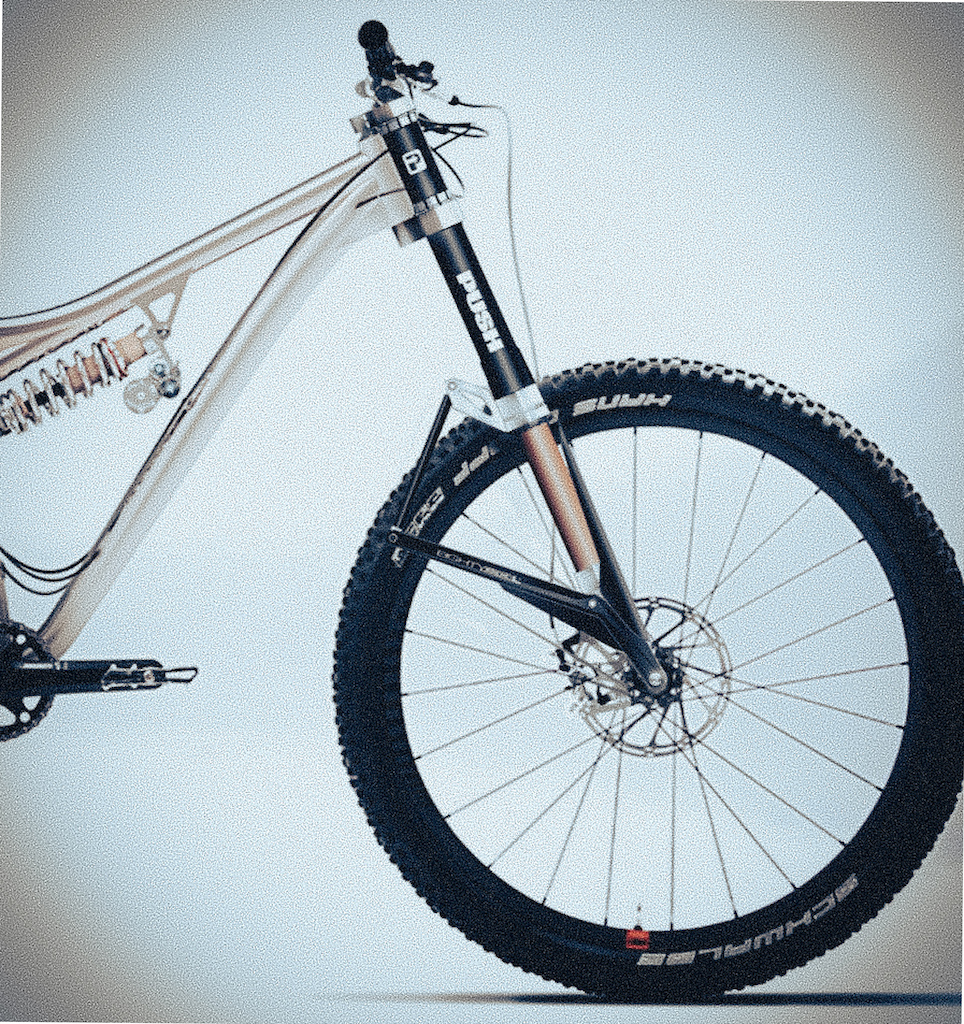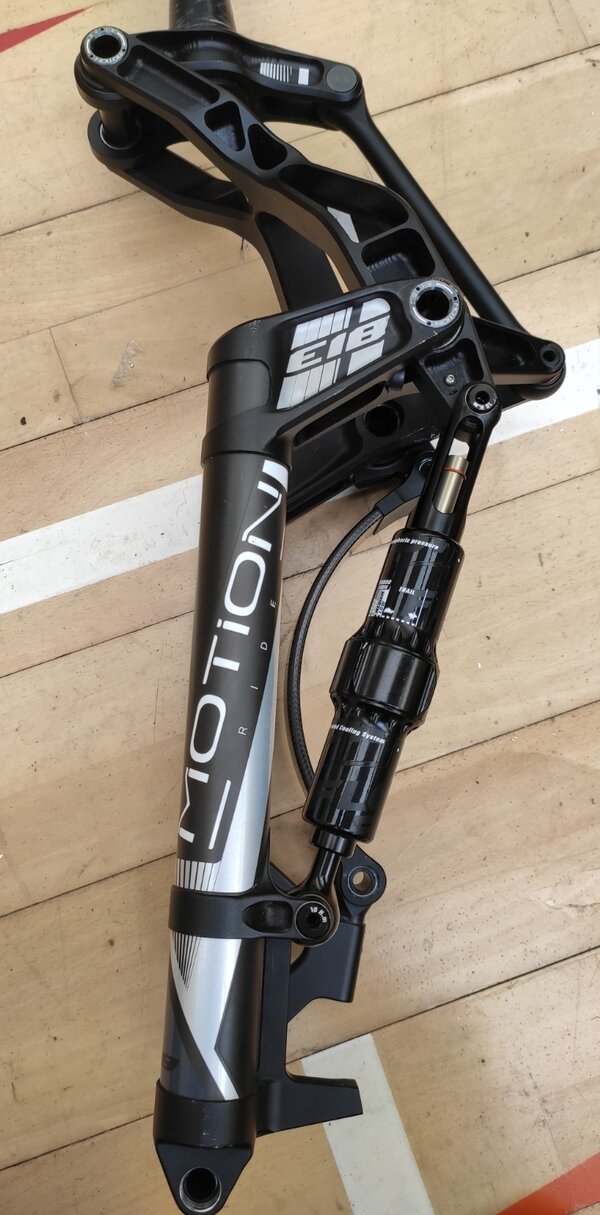OK, sounds like it never really came to fruition.

I found the Pinkbike article now:
https://www.pinkbike.com/news/push-industries-prototype-linkage-fork.html
Here's it quoted in length just in case it disappears:
"When a grainy photo of a linkage fork appeared on Push Industries' Instagram account a few weeks ago, it caused a bit of a buzz around the industry, in part because the news of Specialized's acquisition of Trust's
linkage fork patent came out just a few days prior. There have always been those homegrown trade show contraptions or student engineering projects that appeared on the slopes of Whistler Bike Park, but for these names with a lot of clout in the bicycle biz, it made us think. With their ability to dictate axle paths and anti-rise characteristics, are linkage forks the future of mountain bike suspension technology?
Push Industries has been well known for their tuning and aftermarket kits for some time, but when they introduced their ElevenSix shock, it raised the question - what comes next? Building a rear shock is easy. Simply throw a block of aluminum into the CNC machine, pop in your favorite shim stack, slide on a suitable spring, and voila. Sure, there's A LOT more to it than that, but a fork on the other hand takes a large investment magnesium cast, that is, if you build a traditional fork with one-piece lowers.
It might look like a desktop daydream, but Push actually began prototyping the fork you see above in late 2015. The inverted, dual-crown chassis is also linkage driven. Based on the Earle's Fork patent, used on BMW motorcycles from 1955 to 1969, the leading link design features a link arm main pivot that rides on the lower leg while the dropout is attached separately. Behind the stanchions is not a fender, but another arm bridging the link to the upper tubes.
If you can imagine the front axle moving from the 5-o'clock position up to 3-o'clock, then you understand one concept of the Earles fork: a lengthening wheelbase. The prototype also tested anti-rise levels that are induced by the brake forces, but unlike traditional forks, it can cause the front end to rise under hard braking. USD forks are susceptible to lateral deflection, but the Earles concept helps to stiffen up the steering.


We reached out to Darren Murphy at Push to see if we could get more info on this early design:
| While good in concept, we ultimately felt that telling the story behind the design was going to be too large of a hurdle for a small company like ours. Additionally, there would be some packaging issues because at the time we didn’t have the technology to package the fork in a single crown format. We felt that hurdle would limit its ability to be widely accepted.
The final strike really came in early 2016 when we first learned about the newly formed Trust Performance. I’ve known Dave Weagle for many years and have a lot of respect for him and his work. After a few conversations with Dave, I really felt that Trust had the legitimacy and support to move forward with their linkage fork design. At that point, we archived our design and started to discuss how we might be involved with Trust from a sales/tuning perspective after their public launch. Ultimately those talks fell short for a number of reasons. |
https://www.pinkbike.com/photo/21328226/
Plenty of riders appreciated the qualities of their Trust linkage forks and I would have loved to try out the Earles concept fork myself. I'm certain Darren and his team learned a lot through that development process, tangible projects aside. So, does that mean we will see another fork prototype from PUSH and what will it look like?
When we prodded Darren more about the idea of a production fork, he was tight lipped about the chassis construction, materials used, and a timeline, but did go on to say:
| At this point, Push offering a fork to complement our ElevenSix rear shock is probably the worst kept secret in the industry. Our recent Colorado factory expansion more than doubled our manufacturing capacity, but even with that we have several challenges still ahead of us with a project of this scale. While I won’t commit to a specific timeframe, I will say that our ElevenSix customers will be the first to know! - Darren Murphy, Push Industries |
"
All the best,




